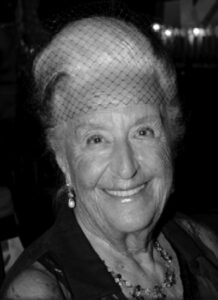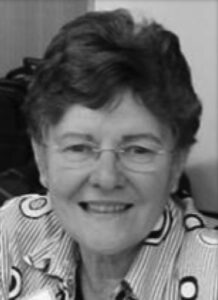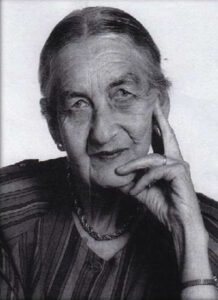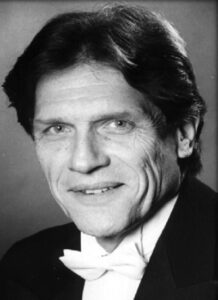For the full history of the Association, see the publication:
100 Years: Music Teachers' Association of NSW 1912 to 2012
by Rita Crews and Julie Spithill [Wirripang, Wollongong, 2012]
History
The first meeting of the “Musical Association” (which was later to become the MTA) was held on July 24, 1912. First mooted on June 6 of that year in a preliminary meeting at the Palings Concert Room, a committee was established to investigate the possibility of ‘forming an association of the musicians of NSW’. This report was received on July 17, 1912 and the Association was ‘born’ just one week later with its first elected President, W.H.Wale.
The musicians union of the time objected to the formation of the Association, feeling it was an ‘unfriendly’ act. This controversy raged for three months, with many newspaper articles published and even strikes by the Symphony Orchestra musicians, who refused to perform with members of the Association. The final Symphony concert for 1912 was cancelled due to this strike with the conductor having to resign from the Musical Association and join the union. As a result it became compulsory for all professional musicians to join the Musicians' Union, a situation which exists to this day. The Association prevailed however, and by the beginning of 1913 had approximately 100 members.
During the next few years the number of members grew and the Association organised regular social events, which were extremely well attended and would attract excellent newspaper coverage. Some of the artists who were performers, or guests of honour at these functions were Harold Bauer, Frank Hutchens, Henri Verbruggen (then director of the NSW Conservatorium of Music), Alfred Hill and Madame Nellie Melba to name a few.
The first annual conference of music teachers in NSW was held in 1929, along with the first published register of qualified music teachers, the forerunner to the current accreditation system.
By 1930 the Musical Association had 697 members and this necessitated a move to larger premises for the meetings and social functions. New initiatives around this time were the introduction of radio broadcasts prepared by the Association and the formation of a Federal Council under the title of The Music Council of Australia with representatives from interstate Musical Associations.
The Great Depression hit the Association hard. Membership resignations and unfinancial members were many and it is during this time that the Benevolent Fund was established. However, lectures and concerts continued, aimed at giving continuity in a time of such upheaval.
1934 saw an extraordinary AGM to vote on the right of women to stand for election to the Council. This proposal was resoundingly defeated 5 years earlier but was now passed with a vote of 75 for and 20 against (It was to be another 49 years before a woman became President of the Association). In 1936 after much work and another extraordinary AGM, the Association’s constitution was changed and it became incorporated.
Throughout this time, the Association worked tirelessly for educational reform. In 1933 the President of the Association Lindley Evans wrote to the Vice Chancellor of Sydney University asking for support for the suggestion that a Chair in music be established at the University or, at the very least, a lectureship within the Faculty of Arts. In 1936 the Association was involved in the introduction of music to the secondary school curriculum. For the first time, music was included in the first year of high school.
As this decade of financial hardship came to an end, the Second World War broke. In the Association’s minutes around this time, we note the appearance of emergency, ambulance and patriotic funds and later Funds for Food for which the Association raised over 1,000 pounds.
Throughout the 1940’s the Council were politically active, almost succeeding to get a proposed bill for the Registration of Music Teachers to the Parliament floor. Lobbying went on for many years but in the event and after a long 35 years of negotiation with state governments, the final rejection came in 1970 when the then Minister for Education declared that there could not be a registration scheme for music teachers if registration was not required for teachers of other subjects. However, in the mid 1970s under the umbrella of the Conservatorium Act, the NSW State Cabinet gave approval to the Conservatorium to formerly accredit private music teachers with appropriate qualifications and/or experience. With the re-structuring of the Conservatorium in the mid-1990s, the Music Teachers’ Association of NSW has proudly taken over the official role of accreditation.
In 1975 the minutes record the view that the name of the Association should be changed to ‘The Music Teachers’ Association of NSW’ in order to better reflect the philosophy of the Association and that consideration should also be given to forming country branches. Consequently in 1981, three branches were formed in Canberra [ceased operations in 2012], Newcastle and the Illawarra.
The Association strives to be visible at events and venues of educational value to inform the public about its work and professional status within the studio teaching community. Open days, music expos and trade shows are avenues where the Association can advertise itself to discuss the aims and benefits of the Association to the public as well as to prospective members.
Since its inception the Association has instigated many competitions for composers and performers as well as enabling a number of scholarships for instrumentalists and singers. Well-respected and experienced adjudicators give freely of their time and expertise to judge these events. Since 1994 Junior Music Festivals have been held in Sydney and regional areas to give performance opportunities to juniors under the age of 16.
The role of the studio music teacher engenders certain ethical and moral standards. To that end, a Musician’s Code of Professional Conduct was drafted in 1936 at the 3rd Biennial Meeting of the National Council of Musical Associations. This was adopted by the Musical Association, updated in 1976 to 'Notes for Private Music Teachers' and became the forerunner of the Association’s current publication, 'Code of Ethics'.
When the Musical Association became the Music Teachers’ Association of NSW, full membership was restricted to those with appropriate pedagogical qualifications or proven years of experience. Associate membership has always been welcome, either by teachers yet to achieve full qualifications or by those simply interested in the Association. Corporate or School of Music membership is not permitted under the constitution. A category of Student Membership for those enrolled in full-time study was enacted in 1995 and in 2005 in response to inquiries from the general public for teachers of contemporary popular/jazz music a new membership category was incorporated into the Constitution.
Non-profit organisations always need to develop ways and means of creating income. Membership fees are the principal source of such income for the Association but occasionally, other means can be introduced. This might include admission fees to concerts and festivals as well as raffles or hire of studios when the Association had premises that included this facility. With fund-raising in mind, the first ‘Sale of Music’ occurred in the 1920s and donations of second-hand music were received at the Association office, including music donated from deceased estates. Many of these sales were held over the years providing a small amount of income and they became the precursor to the current Music Sizzles which have proven to be very popular major fund-raising events.
Honorary Membership of the Association has been conferred on individuals as a mark of appreciation for their extraordinary service to and support of, the Association or their contribution to the music teaching profession. The first of these were publically recorded in the 1927-1928 edition of The Record and included Dame Nellie Melba, Dr W. Arundal Orchard and Mr Henri Verbrugghen.
The Patrons
In 1979 Signora Lidia Baldecchi-Arcuri became the Association's first Patron; Dr Deanna Hoermann became a Patron in 1980 and Dr Miriam Hyde OBE AO in 1991. Emeritus Conductor Patrick Thomas MBE became a Patron of the Association in 2005.




The Anniversaries
On 14th July, 1962, the Musical Association celebrated its Golden Jubilee with a dinner held at the Trocadero at which the Governor, Sir Eric Woodward was guest of honour. This half-century celebration was an exciting event that entailed detailed organisation.
The Diamond Jubilee to celebrate 60 years in 1972 took the form of a cocktail party at the Carlton-Rex Hotel on 4th October. Although the Governor Sir Leslie Herron had accepted the invitation to be guest of honour, due to illness he was unable to attend and Lawrence Godfrey Smith was invited in his stead.
The 70th Anniversary in 1982 was celebrated by a dinner held in the Northern Foyer of the Sydney Opera House, attended by the Governor, Sir Roden Cutler and 139 members and friends.
The 90th Anniversary in 2002 was marked by a grand luncheon in Parliament House, hosted by the Honorable Amanda Fazio MLA. Guests of honour were the Governor of NSW Professor Marie Bashir AO CVO and Sir Nicholas Shehadie AC OBE. Eminent music educator Richard Gill addressed the members.
Centenary Year 2012 was a grand occasion, marked by three major events: a Composer Competition for students; a wonderful Luncheon at Parliament House for 175 members and guests on 13th July, hosted by Mr Mark Coure MLA with guest speaker Dr Karl Kramer, Dean of the Sydney Conservatorium. Governor Professor Marie Bashir was unable to attend but sent a congratulatory message. Patrons Dr Deanna Hoermann and Emeritus Conductor Patrick Thomas MBE launched the book 100 Years: The Music Teachers' Association of NSW 1912 to 2012. The Conference 'New Horizons' in October completed the Centenary celebrations.